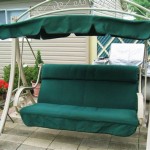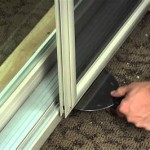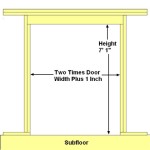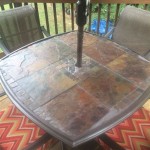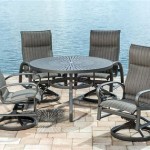Grey Slab Patio Ideas: Creating a Modern Outdoor Oasis
Grey slab patios have become increasingly popular in recent years, offering a versatile and contemporary aesthetic for outdoor spaces. Their neutral tone allows for seamless integration with a wide range of architectural styles and landscape designs. This article explores various ideas for incorporating grey slabs into patio designs, focusing on key considerations for achieving visually appealing and functional outdoor areas.
Material Selection and Slab Characteristics
The foundation of a successful grey slab patio lies in the careful selection of materials. Several factors influence the overall appearance and performance of the patio, including the type of stone, the slab size and shape, and the surface finish. Common materials used for grey slab patios include concrete, porcelain, natural stone like slate or granite, and composite materials.
Concrete slabs are a cost-effective option, offering versatility in terms of size, shape, and texture. They can be poured in place or pre-cast, allowing for customization. Porcelain slabs are known for their durability, resistance to staining and fading, and low maintenance requirements. Their consistent color and texture make them a popular choice for modern designs.
Natural stone slabs, such as slate and granite, add a unique and sophisticated touch to patios. Each slab possesses natural variations in color and pattern, creating a visually interesting surface. Natural stone is also highly durable and weather-resistant, but may require periodic sealing to prevent staining and water damage. Composite slabs offer a blend of natural and synthetic materials, providing enhanced durability and resistance to weathering.
The size and shape of the slabs impact the overall aesthetic of the patio. Large format slabs create a sleek and modern look, minimizing grout lines and creating a sense of continuity. Smaller slabs can be arranged in various patterns, adding visual interest and texture. Rectangular slabs are commonly used for their clean lines and ease of installation, while square slabs offer a more traditional feel. The choice of slab shape depends on the desired style and the specific dimensions of the patio area.
The surface finish of the slabs influences both the appearance and the slip resistance of the patio. Smooth finishes create a contemporary and elegant look, but may become slippery when wet. Textured finishes provide enhanced grip and are suitable for areas prone to moisture. Honed finishes offer a balance between smoothness and texture, providing a comfortable walking surface. The selection of the surface finish should consider safety and aesthetic preferences.
Design Considerations and Layout Options
The design and layout of a grey slab patio should complement the surrounding landscape and architectural style. Factors such as the size and shape of the patio area, the intended use of the space, and the desired aesthetic should be carefully considered. Several layout options can be employed to create visually appealing and functional patios.
A simple grid pattern is a classic and versatile option, suitable for both modern and traditional designs. Slabs are arranged in a uniform grid, creating a clean and orderly appearance. A staggered pattern, also known as a running bond, offsets the slabs in each row, adding visual interest and breaking up the monotony of a grid. A herringbone pattern arranges the slabs in a V-shape, creating a dynamic and eye-catching design.
Circular patios offer a unique and organic feel, contrasting with the angular lines of traditional patios. Slabs can be arranged in concentric circles, creating a visually appealing focal point. A mixed-size slab pattern combines slabs of different sizes and shapes, creating a textured and visually interesting surface. This option is particularly suitable for adding character to larger patio areas.
Incorporating different colors and textures of grey slabs can enhance the visual appeal of the patio. Using a combination of light and dark grey slabs can create a subtle contrast, adding depth and dimension to the design. Introducing slabs with different textures, such as smooth and rough finishes, can add tactile interest and visual variety. These design choices should be carefully considered to avoid creating a cluttered or overwhelming appearance.
The integration of landscaping elements can soften the hard lines of the patio and create a more inviting outdoor space. Planting beds can be incorporated along the edges of the patio, adding greenery and visual interest. Container plants can be strategically placed on the patio, adding pops of color and texture. Trees can provide shade and create a sense of enclosure, enhancing the comfort and privacy of the patio.
Enhancing Functionality and Aesthetics
Beyond the basic layout and material selection, several additional features can enhance the functionality and aesthetics of a grey slab patio. These features include outdoor lighting, seating arrangements, fire pits or fireplaces, and water features.
Outdoor lighting can transform a patio from a daytime space to an inviting nighttime retreat. Strategically placed lights can illuminate pathways, highlight architectural features, and create a warm and inviting ambiance. Low-voltage lighting is a cost-effective and energy-efficient option, providing soft and diffused light. String lights can add a festive and whimsical touch to the patio. Uplighting can highlight trees and shrubs, creating a dramatic effect.
Seating arrangements are essential for creating a comfortable and functional patio. Outdoor furniture should be durable, weather-resistant, and comfortable. A variety of seating options can be incorporated, including lounge chairs, sofas, dining tables, and benches. The choice of seating depends on the intended use of the patio and the available space. Consider incorporating cushions and throw pillows to add comfort and style.
Fire pits or fireplaces can create a focal point on the patio and provide warmth and ambiance on cool evenings. Wood-burning fire pits offer a rustic and traditional feel, while gas fire pits provide convenience and ease of use. Outdoor fireplaces can be built into the patio design, creating a permanent and visually striking feature. Ensure that fire safety regulations are followed when installing a fire pit or fireplace.
Water features, such as fountains or ponds, can add a relaxing and tranquil element to the patio. The sound of running water can mask unwanted noise and create a soothing atmosphere. Fountains can be freestanding or integrated into the patio design. Ponds can be stocked with fish and aquatic plants, creating a miniature ecosystem. The size and style of the water feature should complement the overall design of the patio.
Incorporating an outdoor kitchen or bar area can enhance the functionality of the patio for entertaining. An outdoor kitchen can include a grill, a sink, countertops, and storage space. A bar area can provide seating and a space for mixing drinks. These features can transform the patio into a fully functional outdoor living space.
The careful selection of accessories and decor can personalize the patio and enhance its aesthetic appeal. Outdoor rugs can define seating areas and add warmth and texture to the patio. Decorative planters can add pops of color and greenery. Outdoor artwork, such as sculptures or wall hangings, can add visual interest and personality. Select accessories that complement the overall design of the patio and reflect personal style.

Kandla Grey N Sandstone Paving Slabs At Royale Stones

Top 10 Patio Ideas Designs Marshalls

Top 11 Garden Patio Design Ideas Paving Direct

Bolzano Grey Paving Primaporcelain

Sample Kandla Grey Porcelain Patio Slab

Farrow Grey Tumbled Limestone Outdoor Pavers Quorn Stone

Which Patio Slabs Should I Use Silverbirch Gardens

Choosing Outdoor Patio Slabs Ideas And Inspiration Vitripiazza

Grey Stone Patio Paving Slabs For Gardens Natural

Modern Grey Paving Stone Ideas Backyard Patio

